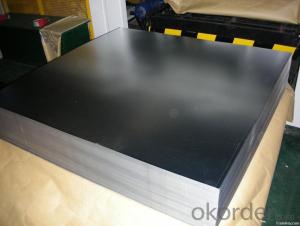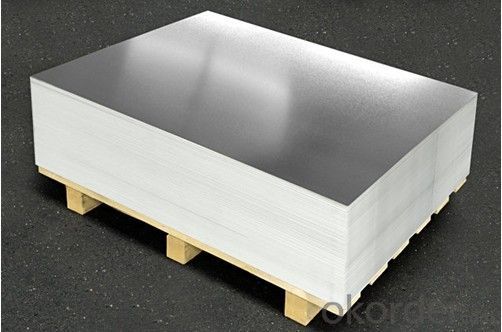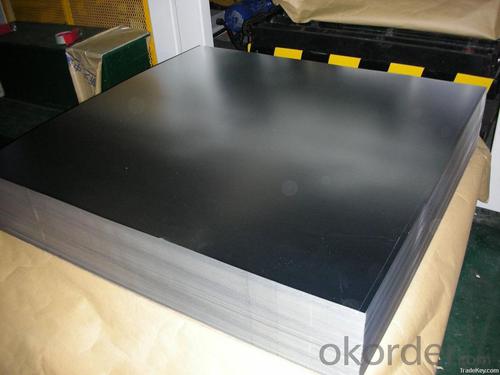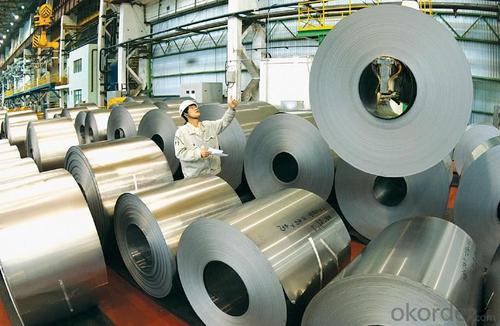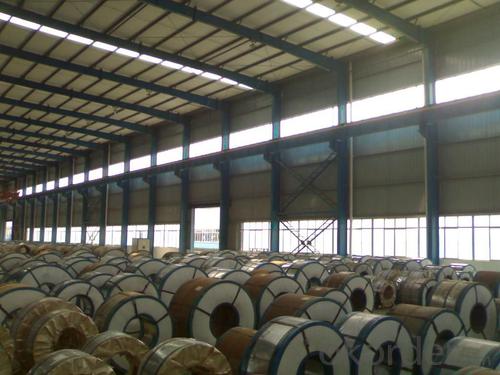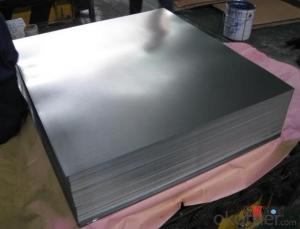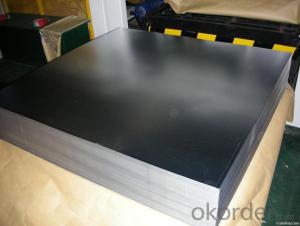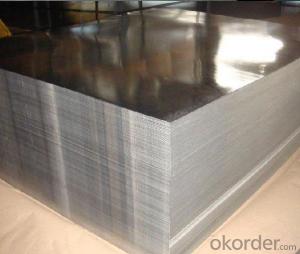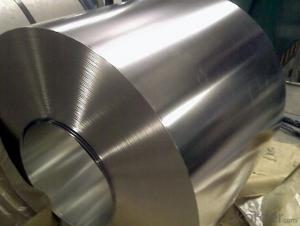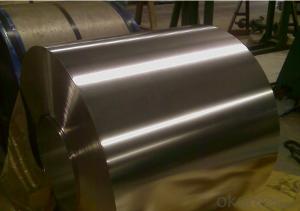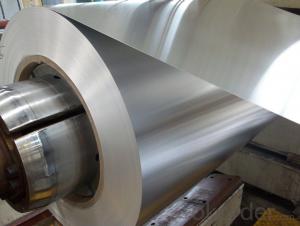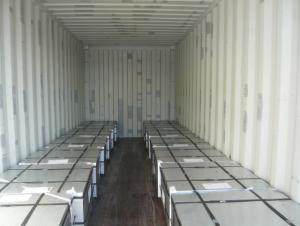Electrolytic Tinplate Coil and Sheets for Food Packing
- Loading Port:
- Tianjin
- Payment Terms:
- TT OR LC
- Min Order Qty:
- 25 m.t
- Supply Capability:
- 7000 m.t/month
OKorder Service Pledge
OKorder Financial Service
You Might Also Like
1.Structure of Electrolytic Tinplate Coil and Sheets for Food Packing Description
Electrolytic Tin Plate Coils and Sheets for Foods Metal Packaging, is one thin steel sheet with a coating of tin applied by electrolytic deposition. Tinplate made by this process is essentially a sandwich in which the central core is strip steel. This core is cleaned in a pickling solution and then fed through tanks containing electrolyte, where tin is deposited on both sides. As the strip passes between high-frequency electric induction coils, it is heated so that the tin coating melts and flows to form a lustrous coat.
2.Main Features of Electrolytic Tinplate Coil and Sheets for Food Packing
Appearance – Electrolytic Tin Plate is characterized by its beautiful metallic luster. Products with various kinds of surface roughness are produced by selecting the surface finish of the substrate steel sheet.
Paintability and printability – Electrolytic Tin Plates have excellent paintability and printability. Printing is beautifully finished using various lacquers and inks.
Formability and strength – Electrolytic Tin Plates have got very good formability and strength. By selecting a proper temper grade, appropriate formability is obtained for different applications as well as the required strength after forming.
Corrosion resistance – Tinplate has got good corrosion resistance. By selecting a proper coating weight, appropriate corrosion resistance is obtained against container contents. Coated items should meet 24 hour 5 % salt spray requirement.
Solderability and weldability – Electrolytic Tin Plates can be joined both by soldering or welding. These properties of tinplate are used for making various types of cans.
Hygienic – Tin coating provides good and non toxic barrier properties to protect food products from impurities, bacteria, moisture, light and odours.
Safe – Tinplate being low weight and high strength makes food cans easy to ship and transport.
Eco friendly – Tinplate offers 100 % recyclability.
Tin is not good for low temperature applications since it changes structure and loses adhesion when exposed to temperatures below – 40 deg C.
3.Electrolytic Tinplate Coil and Sheets for Food Packing Images
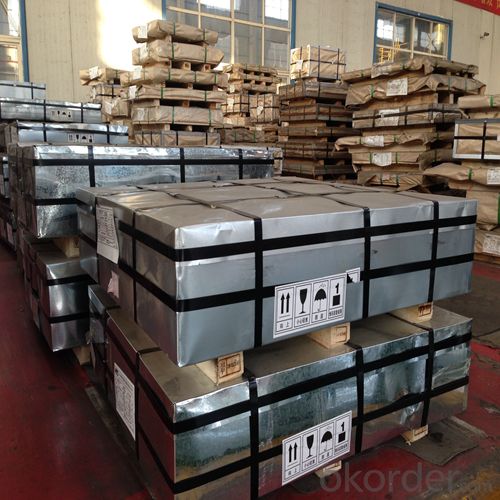
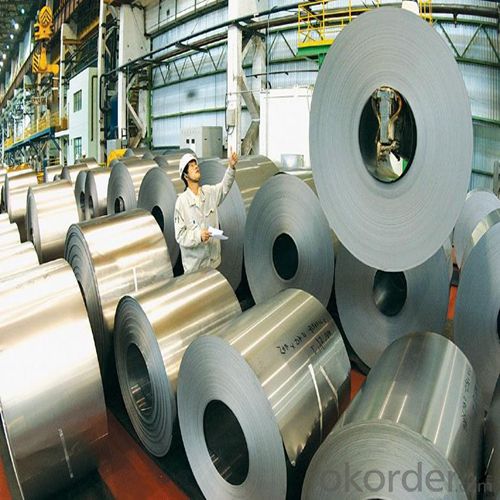
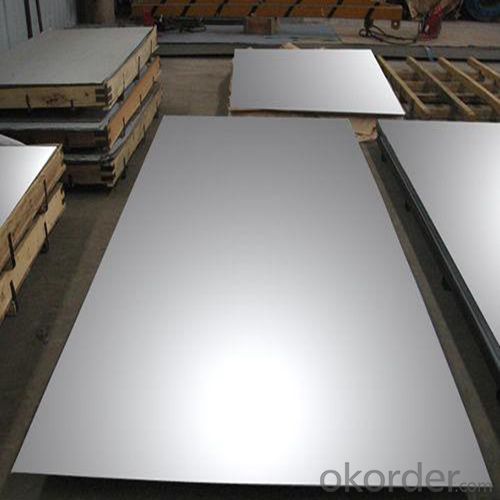
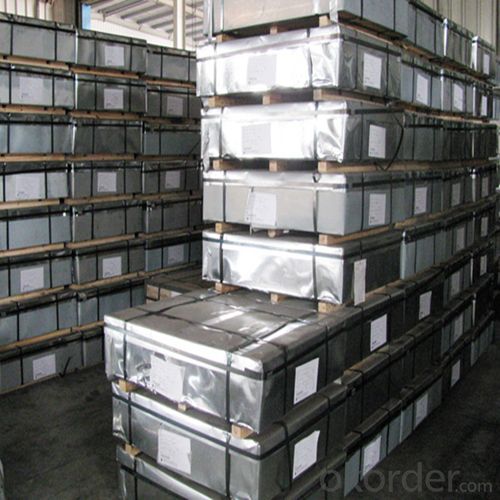
4.Electrolytic Tinplate Coil and Sheets for Food Packing Specification
Standard | ISO 11949 -1995, GB/T2520-2000,JIS G3303,ASTM A623, BS EN 10202
|
Material | MR,SPCC |
Thickness | 0.15mm - 0.50mm |
Width | 600mm -1150mm |
Temper | T1-T5 |
Annealing | BA & CA |
Coil Inner Diameter | 508mm |
Weight | 6-10 tons/coil 1~1.7 tons/sheets bundle |
Passivation | 311 |
Oil | DOS |
Surface | Finish,bright,stone,matte,silver |
5.FAQ of Electrolytic Tinplate Coil and Sheets for Food Packingg
- How are the Electrolytic Tin Plates specified?
The Electrolytic Tin Plates are specified as per the steel base, extent of tempering, the coating weight, annealing method and the surface finish.
- How many types there are for base steels?
The base steels are of three types: Type MR, L, D
- Q: What are the challenges in manufacturing tinplate?
- One of the main challenges in manufacturing tinplate is the complexity of the production process. It involves several steps such as shaping, coating, and annealing, which require precise control and coordination. Additionally, maintaining the quality of the tin coating can be challenging as it needs to adhere uniformly to the steel substrate without any defects. Furthermore, ensuring the tinplate's durability and resistance to corrosion is crucial, requiring continuous monitoring and testing. Overall, managing the intricate manufacturing process, achieving consistent quality, and meeting customer demands pose significant challenges in tinplate production.
- Q: How is tinplate coated to prevent corrosion?
- Tinplate is coated to prevent corrosion through a process called tinplating or electrolytic tin coating. In this process, a thin layer of tin is electroplated onto the surface of the tinplate. This tin layer acts as a protective barrier, preventing direct contact between the base metal (usually steel) and the corrosive elements in the environment, thus inhibiting corrosion.
- Q: What are the different types of tinplate lamination?
- There are primarily two types of tinplate lamination: single-sided lamination and double-sided lamination. In single-sided lamination, only one side of the tinplate is laminated with a protective layer, typically made of a polymer or lacquer. On the other hand, double-sided lamination involves laminating both sides of the tinplate, providing enhanced protection and barrier properties.
- Q: What are the main factors affecting tinplate coil cutting and slitting?
- The main factors affecting tinplate coil cutting and slitting include the thickness and quality of the tinplate, the composition and sharpness of the cutting blades, the tension and alignment of the coil during cutting, and the speed and precision of the cutting machinery. Other factors can include the presence of any defects or irregularities in the tinplate, the temperature and humidity conditions in the cutting facility, and the expertise and experience of the operators involved in the cutting and slitting process.
- Q: What are the main challenges in tinplate welding and soldering?
- The main challenges in tinplate welding and soldering include the need for precise temperature control, the formation of oxide layers on the tinplate surface, and the potential for distortion or warping of the material during the welding or soldering process. Additionally, achieving consistent and strong bonds between tinplate components can be difficult due to the presence of oils, coatings, or contaminants on the surface.
- Q: What are the advantages of using tinplate for stationery?
- There are several advantages of using tinplate for stationery. Firstly, tinplate is highly durable and resistant to wear and tear, ensuring that stationery items made from it can withstand frequent use without easily getting damaged. Secondly, tinplate has excellent corrosion resistance, preventing the formation of rust or degradation over time. This makes it ideal for long-term storage of stationery items. Additionally, tinplate is lightweight and easy to handle, making it convenient for transportation and use. Lastly, tinplate can be easily decorated with vibrant colors and designs, enhancing the aesthetic appeal of stationery products.
- Q: What is tinplate?
- Tinplate is a thin steel sheet coated with a layer of tin, which provides corrosion resistance and enhances its aesthetic appeal.
- Q: How does tinplate contribute to the reduction of carbon emissions?
- Tinplate contributes to the reduction of carbon emissions through its recyclability and lightweight nature. As tinplate is made from steel, it can be easily recycled, reducing the need for new production and saving energy. Additionally, tinplate's lightweight properties make it more fuel-efficient during transportation, resulting in lower carbon emissions throughout its lifecycle.
- Q: Can tinplate be used for packaging confectionery products?
- Yes, tinplate can be used for packaging confectionery products. Tinplate is a commonly used material for food packaging due to its durability, resistance to corrosion, and ability to maintain product freshness. It provides a safe and secure packaging option for confectionery items, ensuring a longer shelf life and preserving the quality of the products.
- Q: What are the main differences between tinplate and tinplate laminates in terms of shelf life?
- Tinplate has a longer shelf life compared to tinplate laminates. Tinplate is made of a single layer of tin coating on steel, providing excellent corrosion resistance and protection against oxygen and moisture. Tinplate laminates, on the other hand, consist of multiple layers, with a thin layer of tin on top of a substrate material such as plastic or paper. While laminates can offer additional features like flexibility and printability, they may have a shorter shelf life due to the potential for delamination or degradation of the substrate material.
Send your message to us
Electrolytic Tinplate Coil and Sheets for Food Packing
- Loading Port:
- Tianjin
- Payment Terms:
- TT OR LC
- Min Order Qty:
- 25 m.t
- Supply Capability:
- 7000 m.t/month
OKorder Service Pledge
OKorder Financial Service
Similar products
Hot products
Hot Searches
Related keywords

